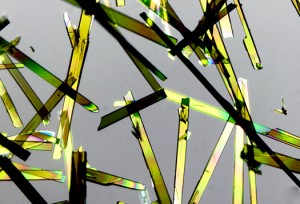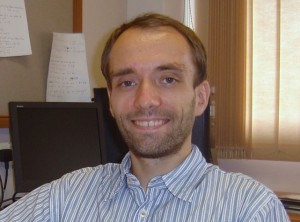Skoltech scientist Maxim Rakhuba and the Head of Scientific Computing Group, Skoltech Professor, Ivan Oseledets have proposed a new approach for solving the Schrödinger equation for vibrational spectra of molecules. The algorithm overcomes the “curse of dimensionality” and allows for the calculation of hundreds of vibrational states of a molecule with high accuracy using just a laptop.
Calculating vibrational spectra of molecules involves a special form of the Schrödinger equation, which is a central equation of quantum mechanics. Multidimensional arrays (also known as tensors) arise naturally in this problem. Amount of memory required to store such tensors grows rapidly with the size of a molecule. This problem is often referred to as the “curse of dimensionality”.
Maxim Rakhuba: “Consider a quite small acetonitrile molecule. Due to the “curse of dimensionality” calculation of its properties requires hundreds petabytes of computer memory. Even the most recent papers propose approaches that require days or weeks of multicore computations. Otherwise, the loss of accuracy is inevitable.”
In the paper authors suggest the way to avoid the problem. Researchers demonstrate that calculations can be done on a laptop without loosing accuracy and within reasonable time.
Scientists used a tensor decomposition approach, namely the tensor train decomposition that is often able to deal with the “curse of dimensionality”. Unfortunately, one has to pay for the representation compactness: the problem becomes nonlinear and the standard approaches for solving Schrödinger equation no longer work. The paper suggests how to overcome this problem and finally solve the equation.
The results of the study were published in The Journal of Chemical Physics.
Контакты:
Skoltech Communications
+7 (495) 280 14 81

